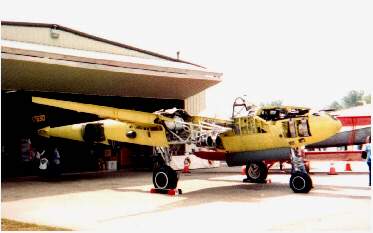|
 THE LOST SQUADRON & THE GLACIER GIRL
THE LOST SQUADRON & THE GLACIER GIRL
� � During the years that followed, thirteen expeditions had been launched to recover the so-called "Lost Squadron." None were successful until 2:32pm on 1 August, 1992. After 4 months of back breaking work in artic conditions, a seven member team brought the first, and (to date) only P-38 from aprox.268 ft. below the icy surface. The aircraft has since been christened "Glacier Girl".  The "Glacier Girl" in front of her hanger in Middlesboro, KY. � � Once the restoration is complete, she will be the only flyable P-38F left in existance. Restoration on the "Girl" began in Oct. of 1992. The tail assembly, which had been torn away by ice flows, was reattached on 1 May, 1997, and plans are for the first flight sometime in 1999. You can stop in and see "The Girl" in person at the Bell County Airport/Lost Squadron Hanger, Middlesboro, Ky. |
AN OVERVIEW OF THE OPERATION BOLERO
THE RESCUE OF THE CREWS
